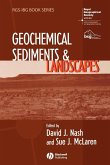High Quality Content by WIKIPEDIA articles! Lithostratigraphy is a sub-discipline of stratigraphy, the geological science associated with the study of strata or rock layers. Major focuses include geochronology, comparative geology, and petrology. In general a stratum will be primarily igneous or sedimentary relating to how the rock was formed. Sedimentary layers are laid down by deposition of sediment associated with weathering processes, decaying organic matters (biogenic) or through chemical precipitation. These layers are distinguishable as having many fossils and are important for the study of biostratigraphy. Igneous layers are either plutonic or volcanic in character depending upon the cooling rate of the rock. These layers are generally devoid of fossils and represent intrusions and volcanic activity that occurred over the geologic history of the area. There are a number of principles that are used to explain the appearance of stratum. When an igneous rock cuts across a formation of sedimentary rock, then we can say that the igneous intrusion is younger than the sedimentary rock.
Bitte wählen Sie Ihr Anliegen aus.
Rechnungen
Retourenschein anfordern
Bestellstatus
Storno








